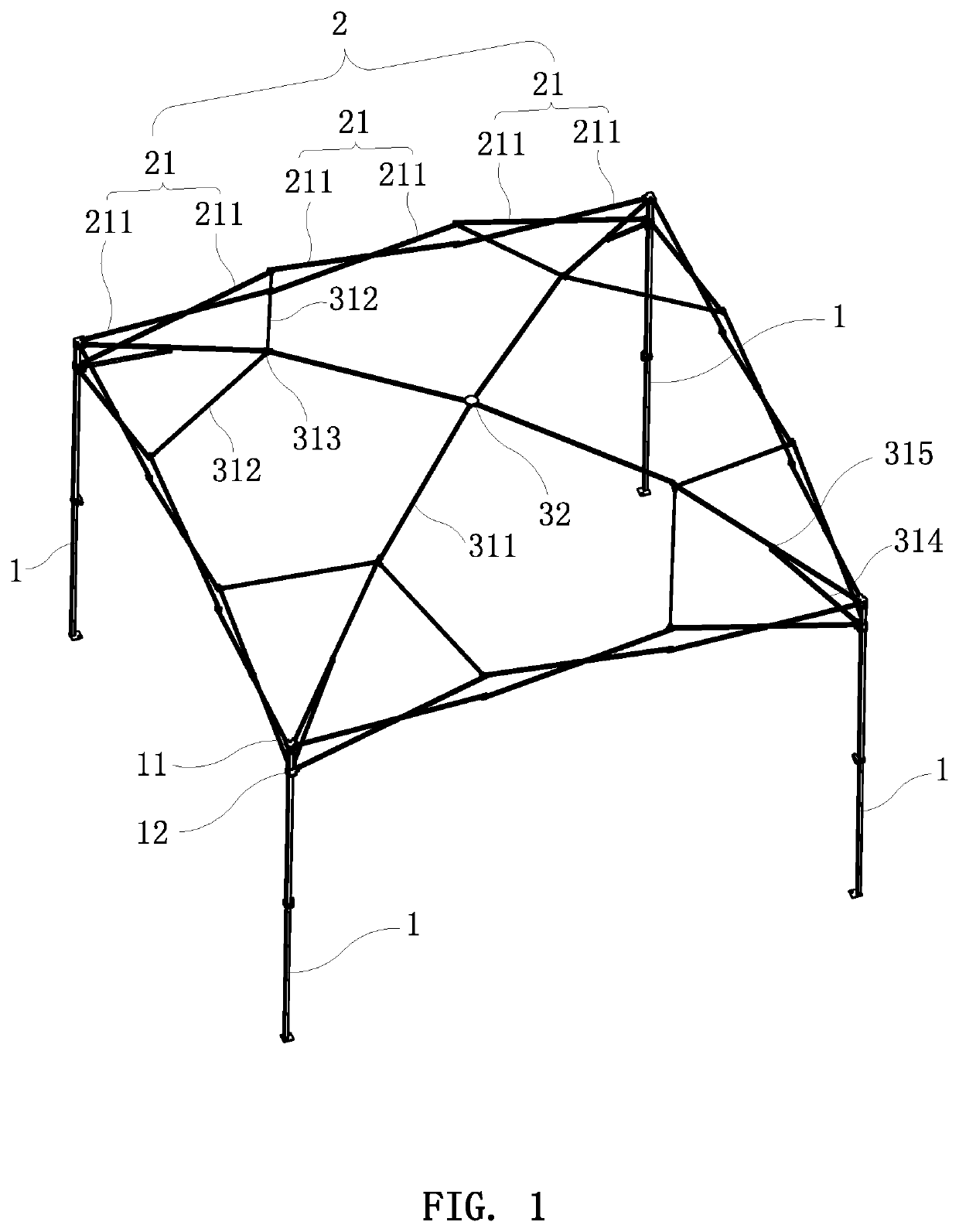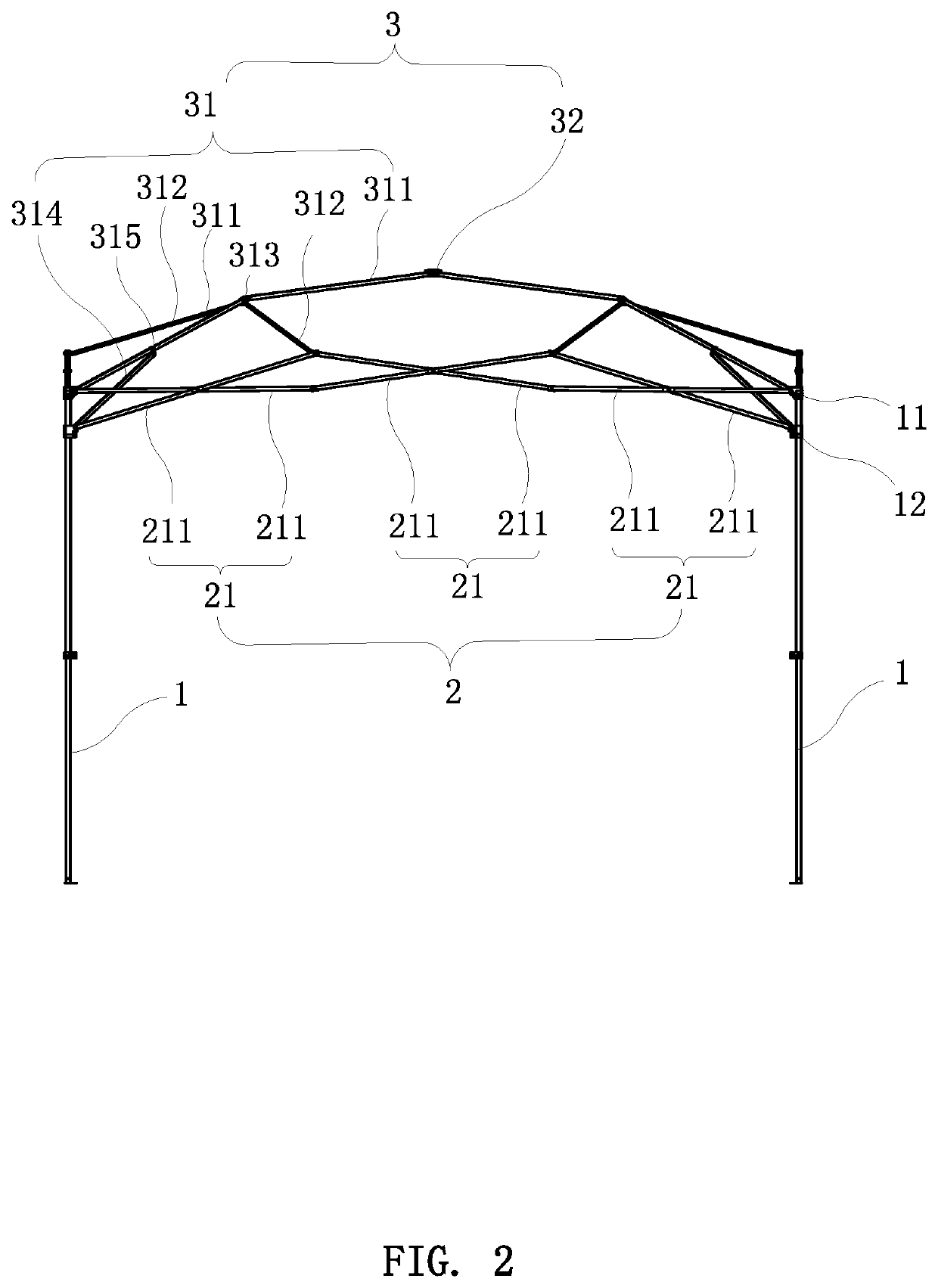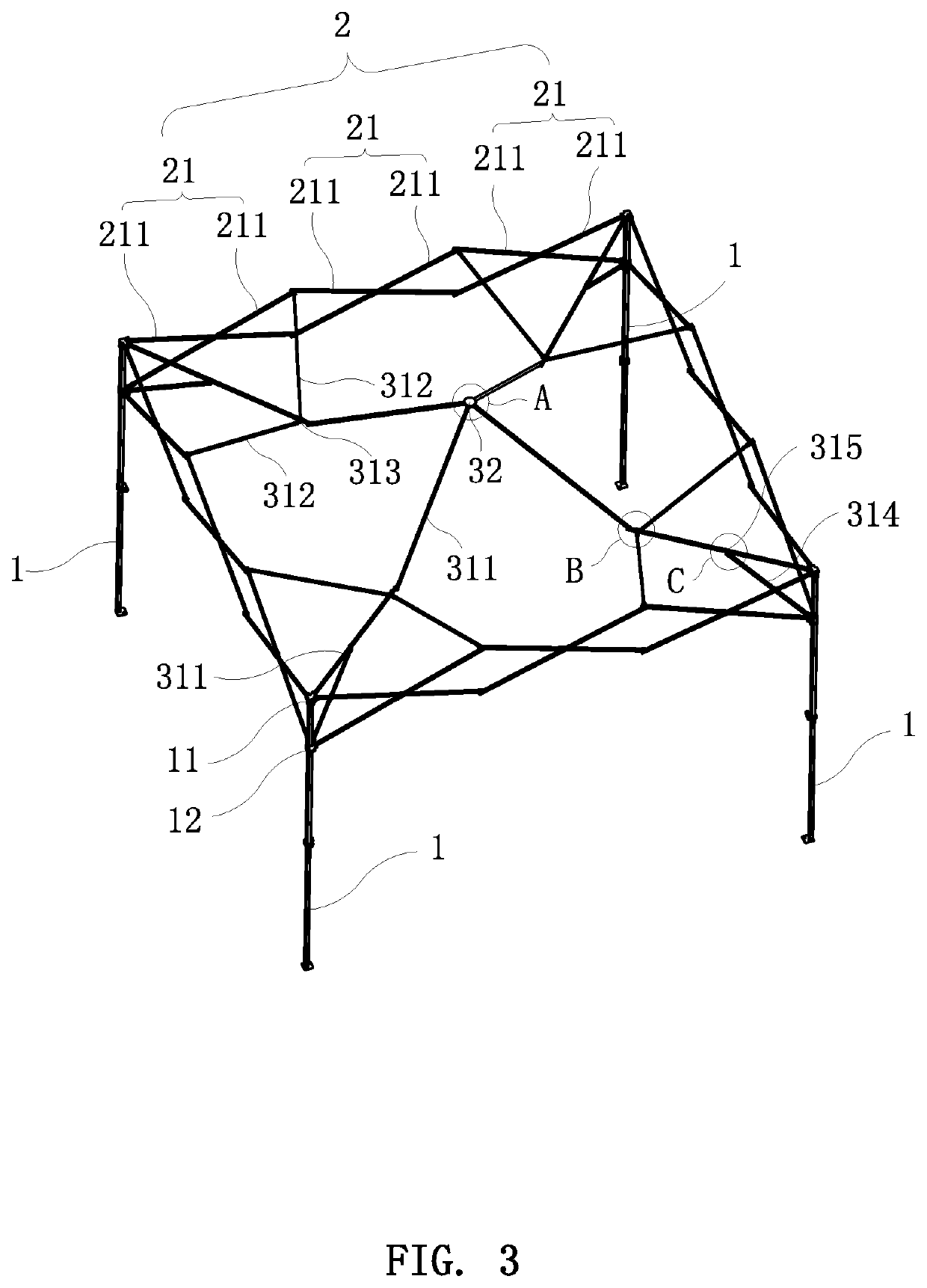Pole frame structure of foldable tent
a tent and pole frame technology, applied in tents/canopies, constructions, building types, etc., can solve the problems of direct damage, rubbed tent cloth will be damaged, and the support rod assembly cannot provide a firm support, so as to prevent the top of the tent from sagging, enhance the support of the tent, and be stable in use.
- Summary
- Abstract
- Description
- Claims
- Application Information
AI Technical Summary
Benefits of technology
Problems solved by technology
Method used
Image
Examples
Embodiment Construction
[0029]Embodiments of the present invention will now be described, by way of example only, with reference to the accompanying drawings.
[0030]Referring to FIG. 1 through FIG. 8, the present invention discloses an improved pole frame structure of a foldable tent. The pole frame structure of the present invention comprises at least three upright poles 1. In this embodiment, the pole frame structure comprises four upright poles 1, which may be composed of six or eight upright poles 1. In order to facilitate the folding and use of the tent, the upright pole 1 may be a telescopic pole. A side support rod unit 2 is pivotally connected between every adjacent two of the upright poles 1 to support the sides of the tent. Each side support rod unit 2 includes at least two side cross support rod assemblies 21. In this embodiment, each side support rod unit 2 includes three side cross support rod assemblies 21. Each side cross support rod assembly 21 includes two crossed side support rods 211 that...
PUM
 Login to View More
Login to View More Abstract
Description
Claims
Application Information
 Login to View More
Login to View More - R&D
- Intellectual Property
- Life Sciences
- Materials
- Tech Scout
- Unparalleled Data Quality
- Higher Quality Content
- 60% Fewer Hallucinations
Browse by: Latest US Patents, China's latest patents, Technical Efficacy Thesaurus, Application Domain, Technology Topic, Popular Technical Reports.
© 2025 PatSnap. All rights reserved.Legal|Privacy policy|Modern Slavery Act Transparency Statement|Sitemap|About US| Contact US: help@patsnap.com



